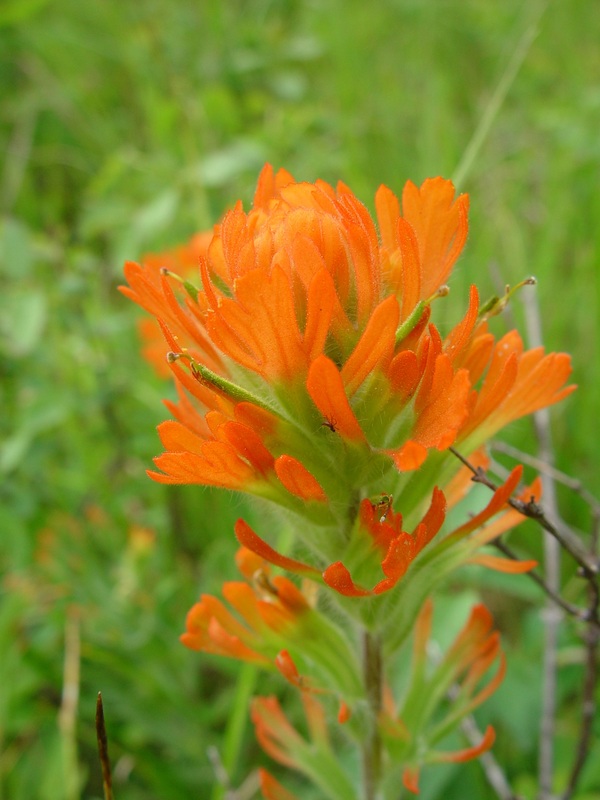

Propogation from seed information provided by the Santa Barbara Botanical Garden from "Seed Propagation of Native California Plants" by Dara E. Plant observation data provided by the participants of the California Consortia of Herbaria, Sunset information provided by Jepson Flora Project. All text shown in the "About" section of these pages is available under the Creative Commons Attribution-ShareAlike License. A 2008 review of the species' status indicated that the plant has rebounded somewhat since the removal of the ungulates, but it is still vulnerable enough that it will not yet be downlisted from endangered status. This Castilleja may hybridize with Castilleja affinis. Invasive grasses prevent the small Castilleja plants from establishing haustoria, its connections to the roots of the goldenbush. The plant depends on Menzies' goldenbush, which has also declined in the area, its habitat becoming fragmented. The cattle and most of the other non-native animals have been removed, but many weeds remain, such as ice plant. Introduced plant species have also taken over the area. Deer also tend to use patches of the plant as bedding. These animals trample the soil, which compacts and degrades it. It has become rare due to habitat destruction, mainly from the presence of domesticated and feral ungulates such as cattle, elk (Cervus canadensis roosevelti), and deer (Odocoileus hemionus). There are two known occurrences of the plant remaining on Santa Rosa Island. Castilleja mollis is a federally listed endangered species.

The host plant for this Castilleja species is probably Menzies' goldenbush, Isocoma menziesii. Like other Castilleja, this Castilleja mollis is hemiparasitic, attaching its roots to those of other plants to tap nutrients and water. Between the bracts bloom the pale to bright yellow pouched flowers. The inflorescence is up to 8 centimeters long and made up of fleshy green or yellow-green bracts. The leaves are 1 to 3 centimeters long and oval. The plant is coated in woolly, tangled, sometimes glandular hairs that give it a gray-green tint. This wildflower is a perennial herb with many spreading, prostrate branches up to about 40 centimeters long. Its habitat is the coastal sage scrub around the windy sand dunes and bluffs. An occurrence was once noted on San Miguel Island, but the plant has not been found there since 1938. It is endemic to the Channel Islands of California, where it is currently known only from Santa Rosa Island. About Soft-leaved Paintbrush (Castilleja mollis) 0 Nurseries Carry This PlantĬastilleja mollis is a species of Indian paintbrush known by the common name softleaf Indian paintbrush.


 0 kommentar(er)
0 kommentar(er)
